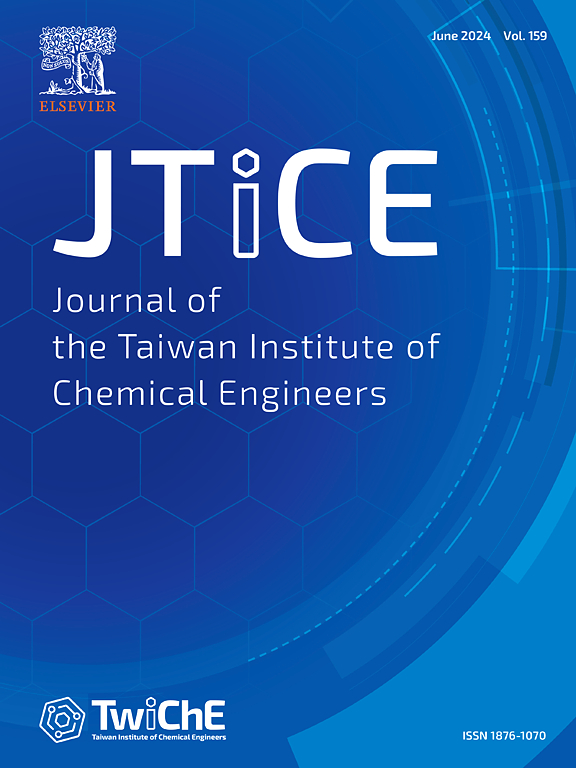在均匀磁场的作用下,热流体流经多孔通道导致非牛顿流体基相变材料的熔化过程
IF 5.5
3区 工程技术
Q1 ENGINEERING, CHEMICAL
Journal of the Taiwan Institute of Chemical Engineers
Pub Date : 2025-07-15
DOI:10.1016/j.jtice.2025.106264
引用次数: 0
摘要
目前,利用PCM的潜热容作为热能储存是一种新兴的被动优化和平衡能源供需的方法。研究了热流体在均匀磁场作用下流经多孔通道时非牛顿流体相变材料的熔化过程。方法首先将控制方程转化为无量纲形式,分析了熔炼过程和通道与PCM区之间的传热。采用有限元技术方法求解无量纲方程。此外,还利用焓-孔隙率模型对熔炼过程进行了分析和检验。结果表明,孔隙率在0.7 ~ 0.85之间的金属泡沫的掺入显著延长了PCM的熔化时间,从而使PCM的完全熔化过程比不掺入的PCM慢35% (εch=1)。此外,通过将Hartmann数从0增加到100,增加了对流体运动的额外阻力,从而减缓了熔化过程,平均熔化时间延长了8.2%。此外,将施加的磁角从0°增加到60°可以使熔化更加均匀。本文章由计算机程序翻译,如有差异,请以英文原文为准。
Melting process of a non-Newtonian fluid based phase change material due to hot fluid flowing through a porous channel under the influence of a uniform magnetic field
Background
Today, one of the emerging passive methods to optimize and balance energy supply and demand is using the latent heat capacity of PCM as thermal energy storage. Melting process of a non-Newtonian fluid based phase change material due to hot fluid flowing through a porous channel has been investigated under the influence of a uniform magnetic field.
Methods
To analyze the melting process and heat transfer between channel and PCM zone, initially, the governing equations transformed into their dimensionless form. finite element technique approach was used to to solve the dimensionless equations. In addition, the enthalpy-porosity model has been utilized to analyze and examine the melting processes.
Significant Findings
The results represent that incorporation of metal foam with porosity ranging from 0.7 to 0.85 has markedly increased the melting time, and consequently slowed down the complete melting process of PCM by 35% compared to case (εch=1). In addition, by increasing the Hartmann number from 0 to 100, which introduces additional resistance to fluid motion and thereby slows the melting process, the average melting time enhanced by as much as 8.2%. Furthermore, augmenting the imposed magnetic angle from 0 to 60 degrees leads to a more uniform melting.
求助全文
通过发布文献求助,成功后即可免费获取论文全文。
去求助
来源期刊
CiteScore
9.10
自引率
14.00%
发文量
362
审稿时长
35 days
期刊介绍:
Journal of the Taiwan Institute of Chemical Engineers (formerly known as Journal of the Chinese Institute of Chemical Engineers) publishes original works, from fundamental principles to practical applications, in the broad field of chemical engineering with special focus on three aspects: Chemical and Biomolecular Science and Technology, Energy and Environmental Science and Technology, and Materials Science and Technology. Authors should choose for their manuscript an appropriate aspect section and a few related classifications when submitting to the journal online.

 求助内容:
求助内容: 应助结果提醒方式:
应助结果提醒方式:


